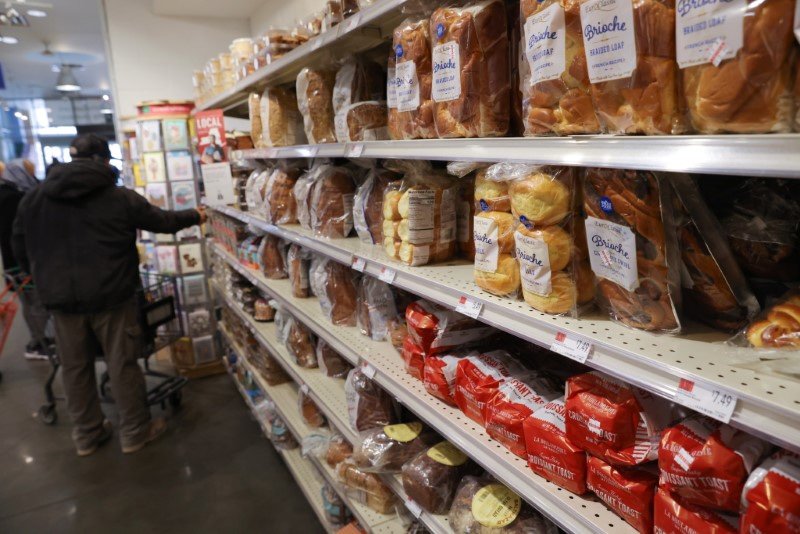By Mike Dolan
LONDON (Reuters) – And just like that… he was gone.
It may be a little premature to say goodbye to the above-target inflation rates that have plagued Western economies over the past three years.
But it seems increasingly misguided to claim that the episode has reinforced expectations of higher inflation.
While expectations have become firmly “anchored” again, much of the recent battle for central banks has already been won and the only risk is that they now wait too late to ease credit again.
On Monday, the latest survey of households from the Federal Reserve Bank of New York showed that the average three-year inflation forecast has fallen to the lowest level in the 11-year history of the series. It now stands at just 2.3%.
It is true that inflation forecasts for other time horizons were closer to 3%, but the survey as a whole is generating basically the same responses as in the years before the pandemic, which may indicate that the “old normal” has returned to some extent.
Easing cost pressures on small businesses also indicate that price pain may be dissipating even as confidence in the broader economy improves.
While the NFIB survey for July showed high inflation remains the most significant problem among small businesses, it also noted that the net number of them planning price increases has fallen to the lowest point since April 2023. The number of owners expecting to increase employee compensation is also at a three-year low.
And financial markets have also virtually eliminated expectations of above-target inflation.
Last week, breakeven inflation forecasts embedded in Treasury-protected securities were lowered to a level very close to the Fed’s 2.0% target on both the 5- and 10-year paths. This is the lowest level in more than three years.
It is true that prices in the so-called TIPS market can be distorted by the ebb and flow of bond market speculation or by overvaluation related to demand, but five-year inflation-linked swaps also showed a similarly sized drop last week.
At 2.44%, the swap has lost 15 basis points this month alone and is about 35 basis points below the long-term inflation reading it suggested in April.
HOT AND COLD
Bank of America’s latest global fund manager survey showed a rapid decline in the number of managers identifying higher inflation as the biggest risk to portfolios.
While in July one in three said it was the greatest “extreme risk”, this month only one in eight thought the same.
Could energy prices change the whole picture again?
There is no doubt that oil and gas prices have an effect on inflation and the fears it raises. That became clear after the invasion of Ukraine in 2022.
But crude oil prices have been down year-on-year for the first time since February, and those base effects will weigh on headline inflation for months to come.
Moreover, an energy-driven rise in inflation seems highly unlikely if there is a parallel fear that a recession will affect oil demand.
While the number of BofA respondents expecting a “hard landing” for the economy over the next 12 months remains low, it rose this month to 13%, its highest point since January.
So one of the big questions is whether all the fuss about a post-pandemic “Great Inflation” or global economies “running hot for years” was just hot air itself.
Brad DeLong, a professor at the University of California, Berkeley, recently wondered why the market-implied inflation outlook changed so suddenly.
“The marginal arbitrageur in nominal Treasury TIPS appears to be ruling out scenarios that the economy gets too hot over the next five years,” DeLong wrote in a blog post.
Going further, it suggests that the Fed may actually face the risk of missing its inflation target for much of the next five years, if the market-implied inflation rate of around 2% is averaged over that period and with current rates still between 2.5% and 3.0%.
If investors truly believe the Fed now faces years of missing its target again, then they must also be considering the possibility of a return of the “secular stagnation” theme that haunted the pre-pandemic era.
And if that’s correct, then the Fed may have kept things too tight for too long.
On the one hand, last week’s increased market volatility showed how changeable markets can be even with a minor catalyst.

But even allowing for the twists and turns of the market, there is clearly little in public or corporate polls to suggest that high future inflation is seen as a major problem.
The views expressed here are those of the author, a Reuters columnist.
(by Mike Dolan X: @reutersMikeDEdited by Marguerita Choy)
#Expectations #high #inflation #fears #ease #Mike #Dolan #Reuters